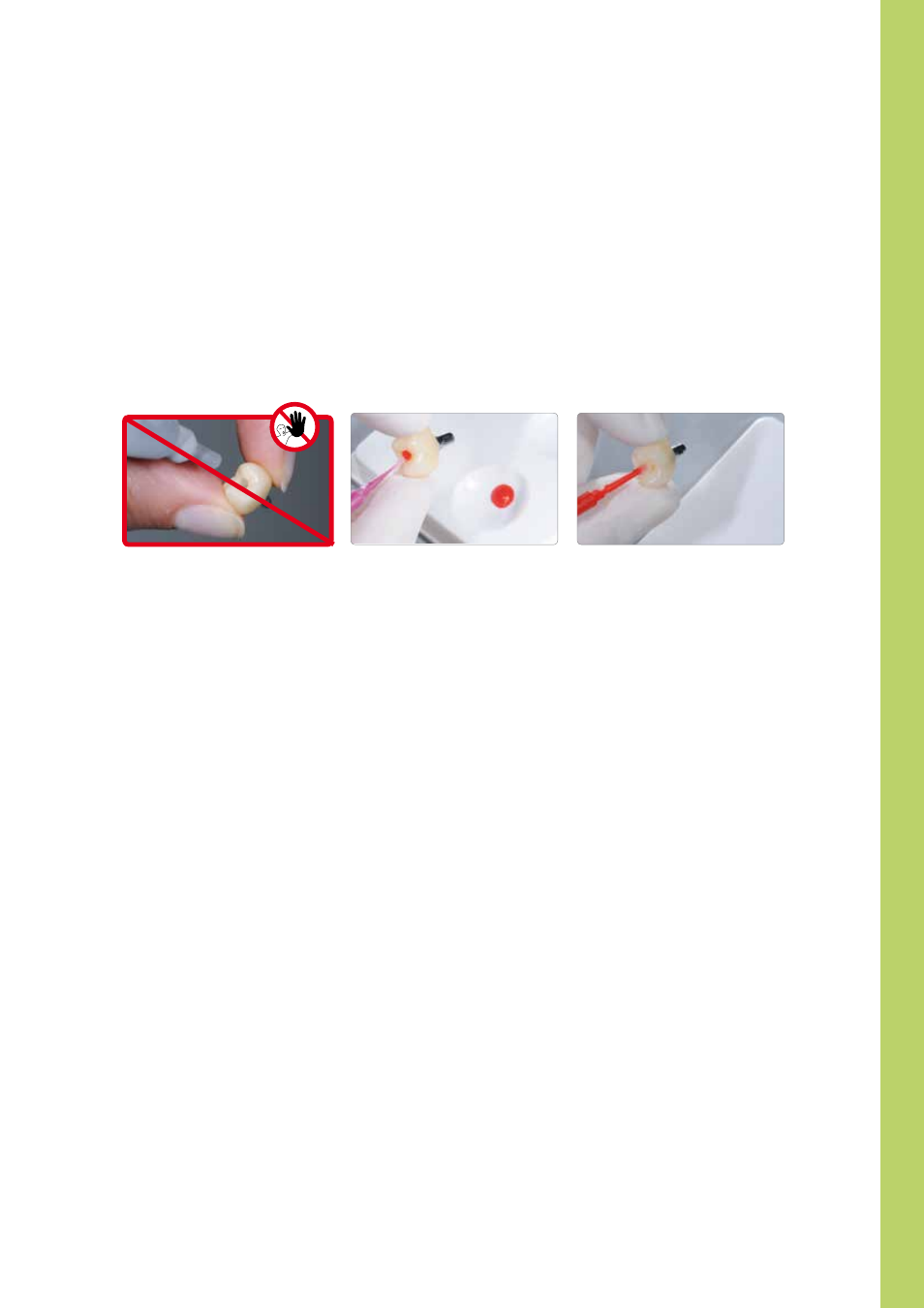Seating the hybrid abutment crown – Ivoclar Vivadent IPS e.max CAD Abutment Solutions User Manual
Page 57

57
Seating and After
car
e
Seating the hybrid abutment crown
Preparing/Conditioning the Hybrid Abutment Crown
Please observe the following notes to prepare for the intraoral sealing of the screw channel:
– As a general rule, do not blast IPS e.max CAD hybrid abutment crowns with Al
2
O
3
or glass polishing beads.
– Thoroughly clean the the hybrid abutment crown with water and blow dry.
– Etch the screw channel from the occlusal side with 5% hydrofluoric acid gel (IPS Ceramic Etching Gel) for 20 seconds.
Make sure that no etching gel comes into contact with the occlusal surface. Important: Do not use the IPS Ceramic
Etching Gel intraorally.
– Thoroughly rinse off the etching gel with water and dry with oil- and water-free air.
– Apply Monobond Plus to the etched and cleaned surface in the screw channel, allow to react for 60 seconds and then
disperse excess with oil- and water-free air.
IPS e.max CAD ceramic structures must not be blasted.
The screw channel is etched with IPS Ceramic Etching
Gel for 20 s and subsequently cleaned.
Monobond Plus is applied, allowed to react for
60 s and excess is dispersed.
Seating the hybrid abutment crown
For the permanent seating of the hybrid abutment crown, please observe the following working steps:
– Do not use phenolic mouth washes, as such products negatively influence the bond between the ceramic and the
composite.
– Insert the hybrid abutment crown intraorally into the implant.
– Manually screw in the matching implant screw.
– Tighten the implant screw with a torque wrench (observe the instructions of the manufacturer).
– Check the screw channel for contamination/moisture and clean with Total Etch (phosphoric acid gel), if necessary.
– Insert a cotton or foam pellet into the screw channel.
– Apply the bonding agent, followed by polymerization.
– Seal the screw channel with a composite material (e.g. Tetric EvoCeram) in the appropriate shade.
– Polymerize with an LED curing light (e.g. Bluephase).
– Check the occlusion/articulation after polymerization and correct possible rough spots with suitable fine-grit diamonds.
– Polish to a high gloss with silicone polishers (e.g. OptraPol/OptraFine).
